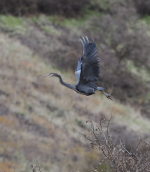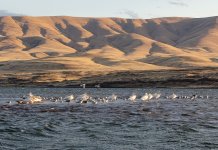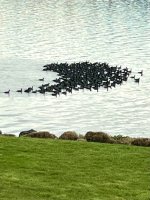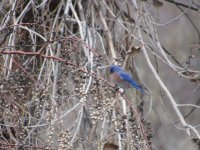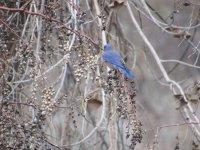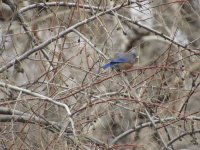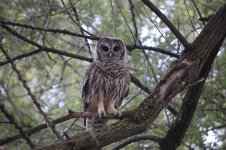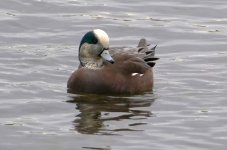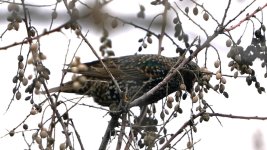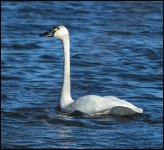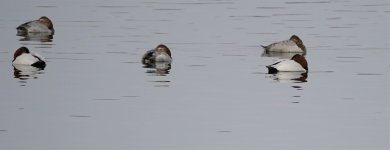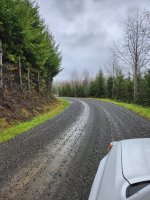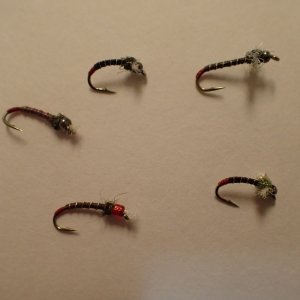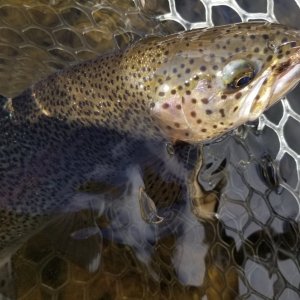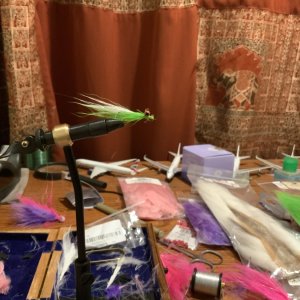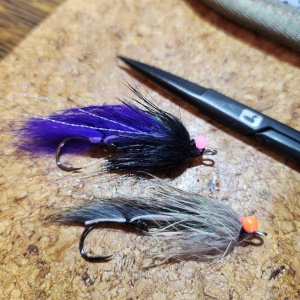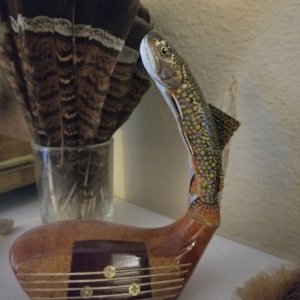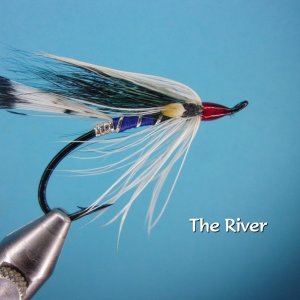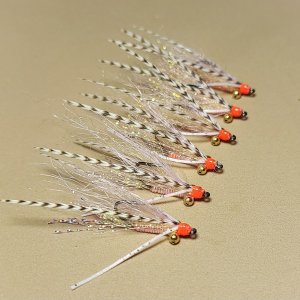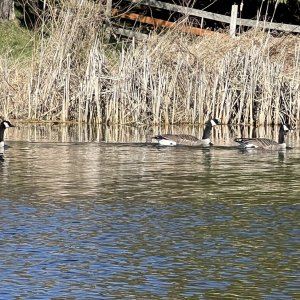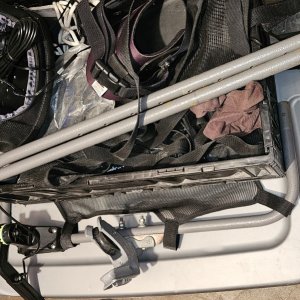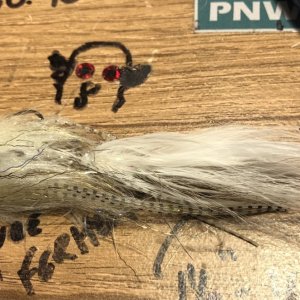You are using an out of date browser. It may not display this or other websites correctly.
You should upgrade or use an alternative browser.
You should upgrade or use an alternative browser.
Got any bird pics?
- Thread starter Wadin' Boot
- Start date
I always enjoy seeing west side bird pictures with lichens and moss.View attachment 96943
View attachment 96944
A passing flock can be recognized by their distinctive high-pitched “tsee” calls that maintain flock cohesion. Like the ruby-crowned kinglets, these birds are always on the move.
Steve
Jay
Bass-O-Matic
Life of the Party
...bunch of old coots...
Was there a bald eagle in the area?View attachment 97855
What the duck?…a gang of drifters passing by…
There is a nesting pair just a couple hundred yards from my house up lake…Was there a bald eagle in the area?
We see them bunch up like that when they feel threatened. On the lake where our place is on the Oregon Coast, bald eagles routinely hunt wintering coots and other waterfowl. They'll even hide under boat docks when an eagle is around.There is a nesting pair just a couple hundred yards from my house up lake…
very cool that you got the olive in the beak and pictures in the olive tree setting.Saw a group of 9 Western Bluebirds in Richland.
View attachment 97878View attachment 97879View attachment 97880
I took my visiting daughter around locally for some "nature" a couple of days before christmas.
at WE Johnson Park at the usual spot we saw up to a couple of dozen bluebirds.
Gray day, low light, high ISO long distance shots for me.
But this was a fun group:
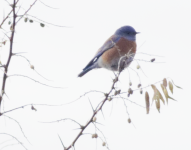
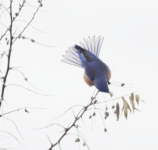
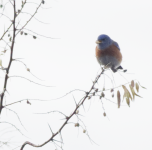
and a couple of better pictures in the stables:
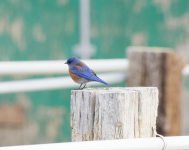
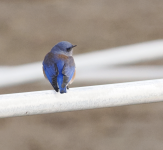
While pied-billed grebes may be less conspicuous than their larger cousins, such as the Western grebe known for their highly dramatic, choreographed mating dances. But they are year-round residents, especially in smaller freshwater ponds and canals. They are quite common in the canals at Ridgefield but their attitude toward photographers is schizophrenic. Some individuals dive at the sight of the camera or face away; others are hams, unconcerned by my presence. During a mid-September trip, I encountered a ham who kept hunting in spite of my presence.
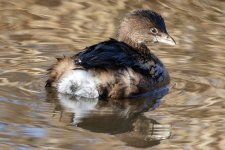
Like the bills of mergansers, the bills of grebes are also serrated; this is very helpful when trying to hold onto slippery prey like fish. This image shows these serrations in the bill.
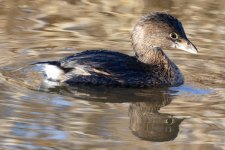
This pied-billed grebe was successful in capturing lunch, a three-spined stickleback (Gasterosteus aculeatus). This fish species has sharp pelvic spines and two long dorsal fin spines that make them harder to swallow. But if the size difference between predator and prey is too great, the spines are not enough to prevent consumption.
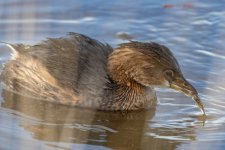
After a successful hunt, it was time for a postprandial siesta.
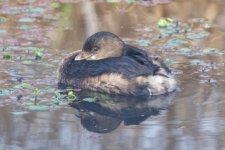
Steve

Like the bills of mergansers, the bills of grebes are also serrated; this is very helpful when trying to hold onto slippery prey like fish. This image shows these serrations in the bill.

This pied-billed grebe was successful in capturing lunch, a three-spined stickleback (Gasterosteus aculeatus). This fish species has sharp pelvic spines and two long dorsal fin spines that make them harder to swallow. But if the size difference between predator and prey is too great, the spines are not enough to prevent consumption.

After a successful hunt, it was time for a postprandial siesta.

Steve
In the Salish Sea, we typically expect to encounter great blue herons stalking the edges of intertidal or river banks, perhaps even perched on a bull-kelp stipe. But they are also VERY effective terrestrial predators on small rodents, such as voles. They walk slowly, patiently, through fields until they detect some movement and then wait for an opportunity to stab their prey with that dagger-like bill.
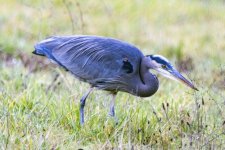
The mud on its bill is evidence of prior attacks.
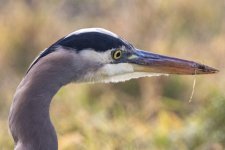
The slightly-smaller cousin of the great blue heron, the great egret, has the same flexible foraging strategies: aquatic prey or terrestrial rodents.
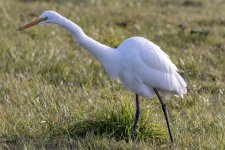
The red on the bill of this great egret is from its last victim.
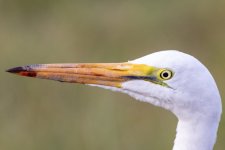
Steve

The mud on its bill is evidence of prior attacks.

The slightly-smaller cousin of the great blue heron, the great egret, has the same flexible foraging strategies: aquatic prey or terrestrial rodents.

The red on the bill of this great egret is from its last victim.

Steve
Bass-O-Matic
Life of the Party
Gyrfalcon22
Life of the Party
Some days you just take whatever the backyard will give you. Like today. Taken for granted are the graceful scrub jay and bald eagles I see daily.
Last edited:

